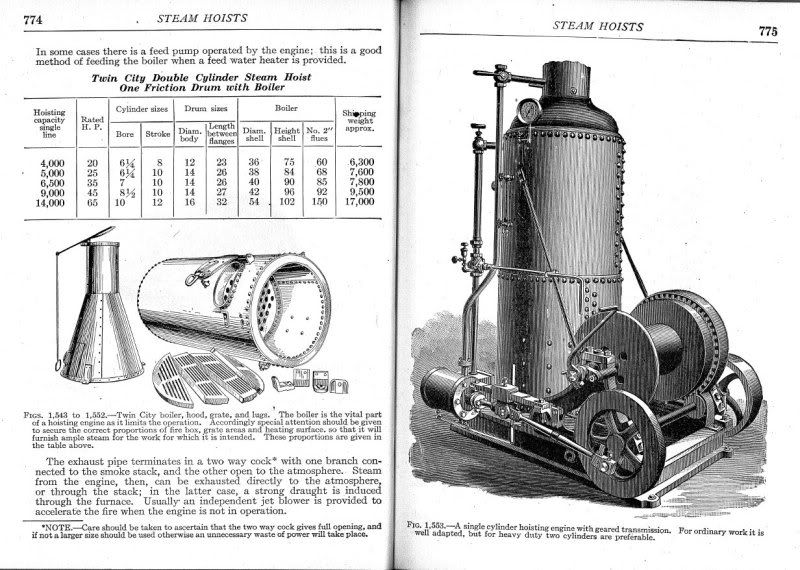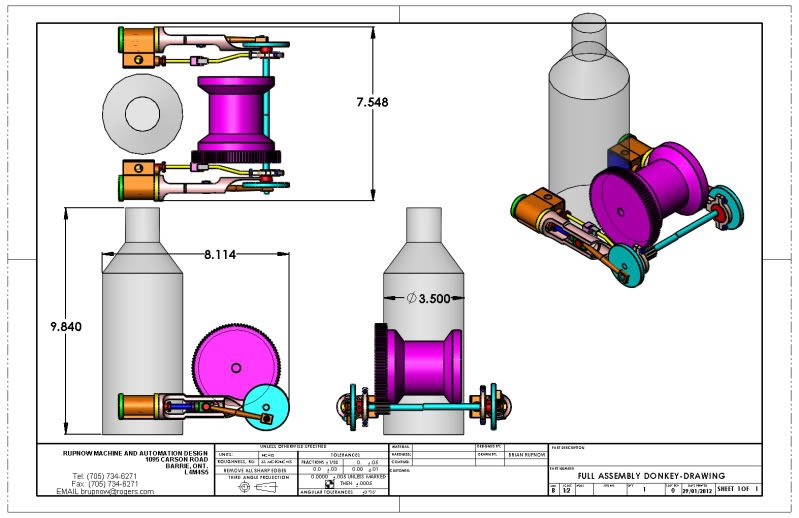I followed Captain Jerrys Donkey Engine post with great fascination, until alas, it kind of bogged down and came to a stop. Now that I have the capability to cut spur gears, I have been searching thru all of the Youtube postings of Steam Donkey engines, and decided that there are many different types and configurations of said engine. I think I would like to try building one myself, and of course I will post build drawings as I go along so that others may join in the fun if they wish. I don't have any experience with donkey engines, and I don't have one close at hand to run out and measure, but that probably isn't as large an issue as one would think. I have found a youtube video which I will post a link to, and it shows the one I may try to design/model/build. This much I understand---there is a double acting cylinder on each side. The crankshaft is actually a long pinion-shaft that reaches from side to side, and since the engine would have to be self starting, the crank throws will have to be 90 degrees out of phase. I know that the pinion and the very large gear are constantly in mesh, and that the big gear is fixed to the large winch shaft so that the winch shaft turns whenever the engine is turning. The winch itself is supported by bearings which "float" on the main winch shaft, and there is a clutch mechanism (which is explained very well in captain Gerrys article) that transmits torque from the main shaft to the winch drum. This clutch mechanism is operated by a manually engaged lever.---I think the lever and clutch mechanism only has to be at one end of the winch drum. I can't see any good reason that this engine would ever have to go into reverse, because when cable is pulled off the winch drum, the drum can "free-wheel" to play out the cable. Some of this type of Donkey engine was used in mine hoists, and consequently had a large ratchet and paul assembly, but I don't think that was needed on a Donkey that winched logs across the ground. Also, Jerry makes reference to an external band brake which gave him difficulty, and I'm kind of wondering why it was there. To the best of my knowledge, this type of winch only pulled, as you can not push with a wire cable. why then have a brake on it at all? I welcome all discussion, as I'm just getting my head into this thing now. I am not trying to steal any of Captain Gerrys thunder, as his post and machine are excellently done, and mine will be somwhat different. Comments and helpfull hints or theories please.----Brian Rupnow
[ame]http://www.youtube.com/watch?v=VM3qRcWmo-4&feature=player_embedded[/ame]
[ame]http://www.youtube.com/watch?v=VM3qRcWmo-4&feature=player_embedded[/ame]






